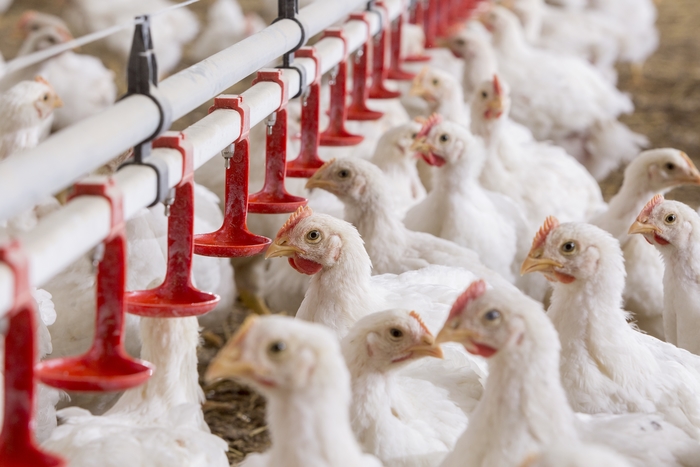Management strategies based on an integrated approach encompassing feed, farm and health offer the potential to reduce antibiotic use in poultry production cost-effectively according to Antony Taylor, Monogastric business manager with Trouw Nutrition GB.
“Although the monogastric sector has historically been responsible for the largest proportion of agricultural antibiotic consumption, there are several drivers to reduce routine usage,” he comments. “Besides legislation changes that restrict the use of antibiotics around the world, there is also a surging demand for antibiotic-free produced meat from both the retail and food service perspective, offering an additional incentive to producers.”
Reducing antibiotics in broiler production is a global necessity. The main concern is the potential drop in animal performance and profitability. However, new studies show it is possible to reduce the need for antibiotics while maintaining or improving profitability by implementing an integrated feed-farm-health approach.
Mr Taylor says that to reduce the need for antibiotics, it is essential to review the whole system to identify and manage challenges. These include raw material management, feed safety, biosecurity and hygiene, water quality and health management. By optimising all these aspects, he says producers can refine their system to reduce antibiotics use while maintaining or improving profitability.
“For example, gut health challenges which are a significant threat to performance and a major reason for antibiotic use can be managed with feed additives. A combination of different products can improve poultry gut health significantly, preserving or enhancing productivity. While some additives work to support digestion and the natural barrier against Gram-negative bacteria, others improve the microbial balance throughout the small intestine, boosting gut barrier integrity.
“In a recent study, a poultry integrator in Israel was able to reach the goal of producing without antibiotics and ionophores. The number of flocks raised without antibiotic intervention increased from 89.1 % to 98.8 %, and feed conversion ratio was improved by 3 % compared to when they still used antibiotic growth promoters and ionophores. This demonstrates the potential to reduce antibiotics without harming profitability.
“The aim now must be for producers to take a lead in the drive to reduce antibiotic usage to meet the demand of legislators and consumers through the adoption of integrated management practices,” he concludes.


